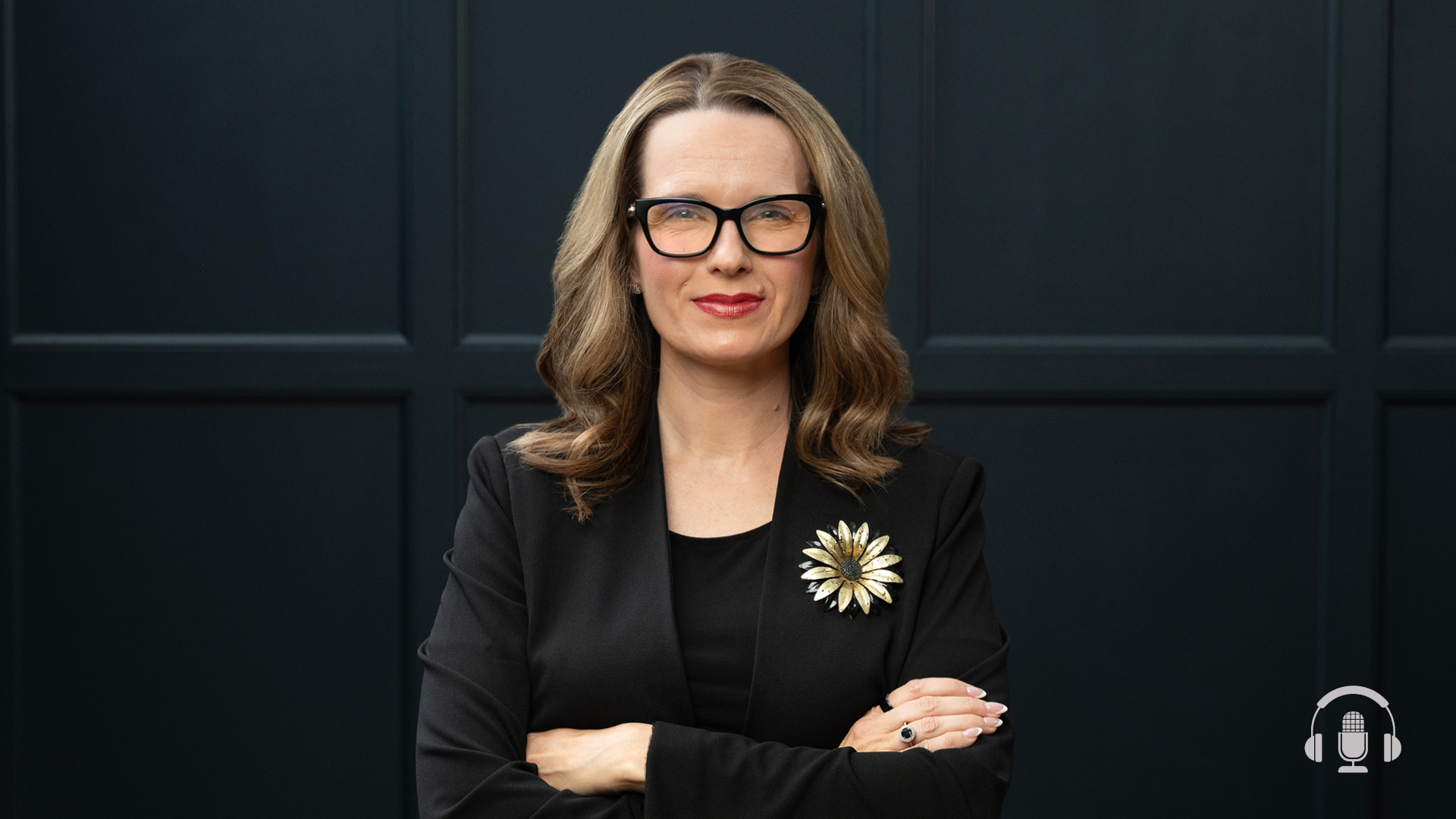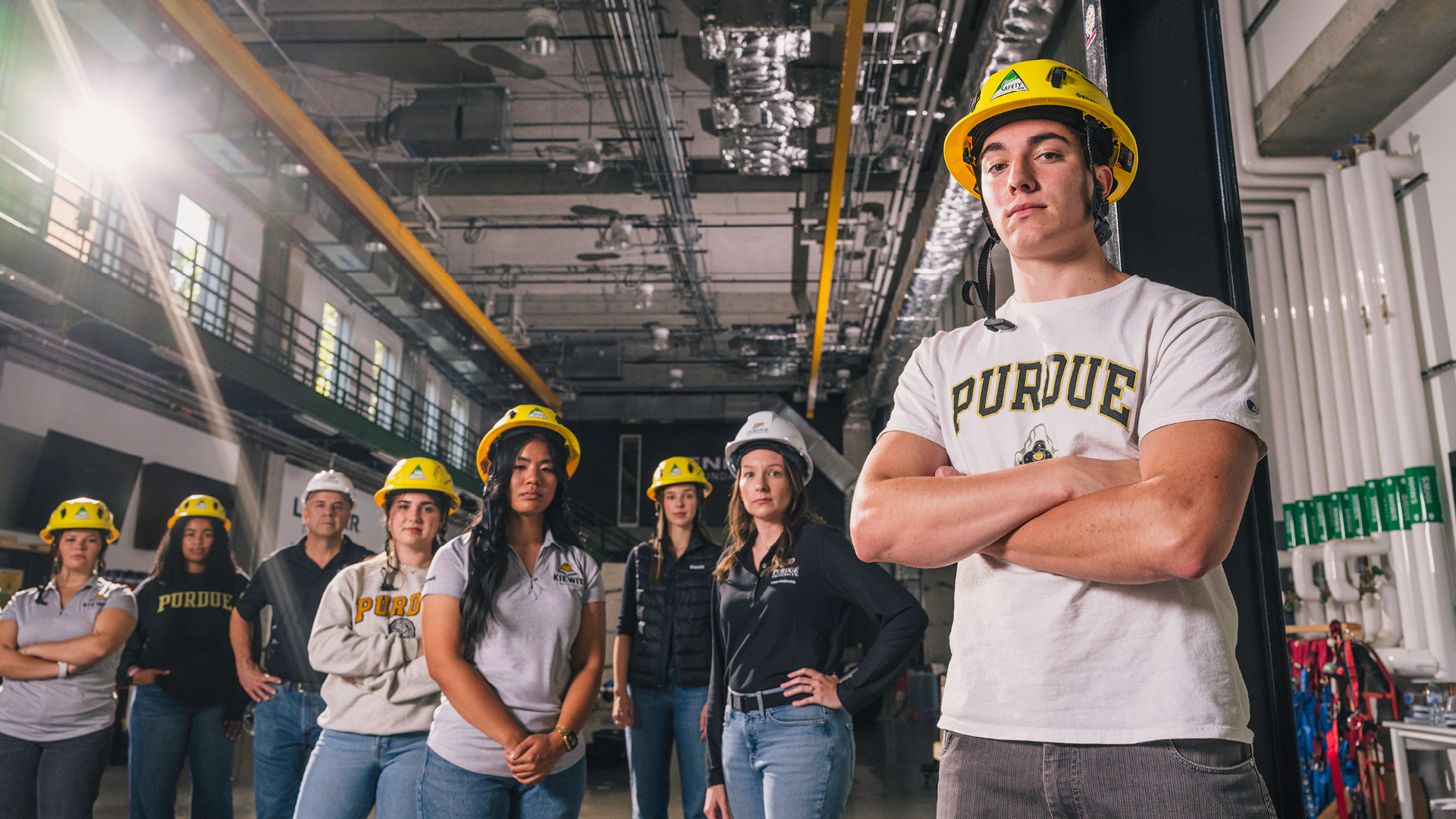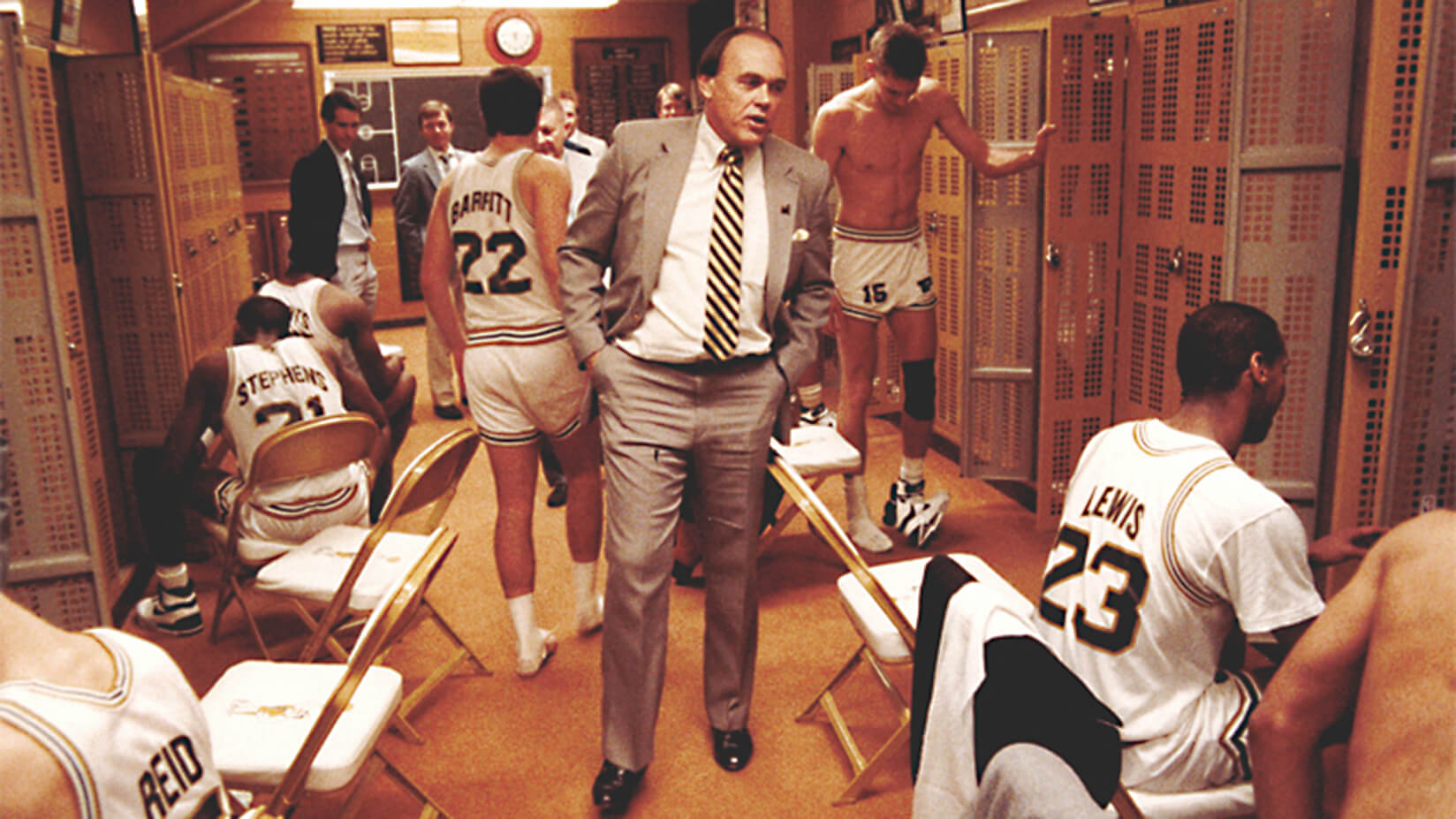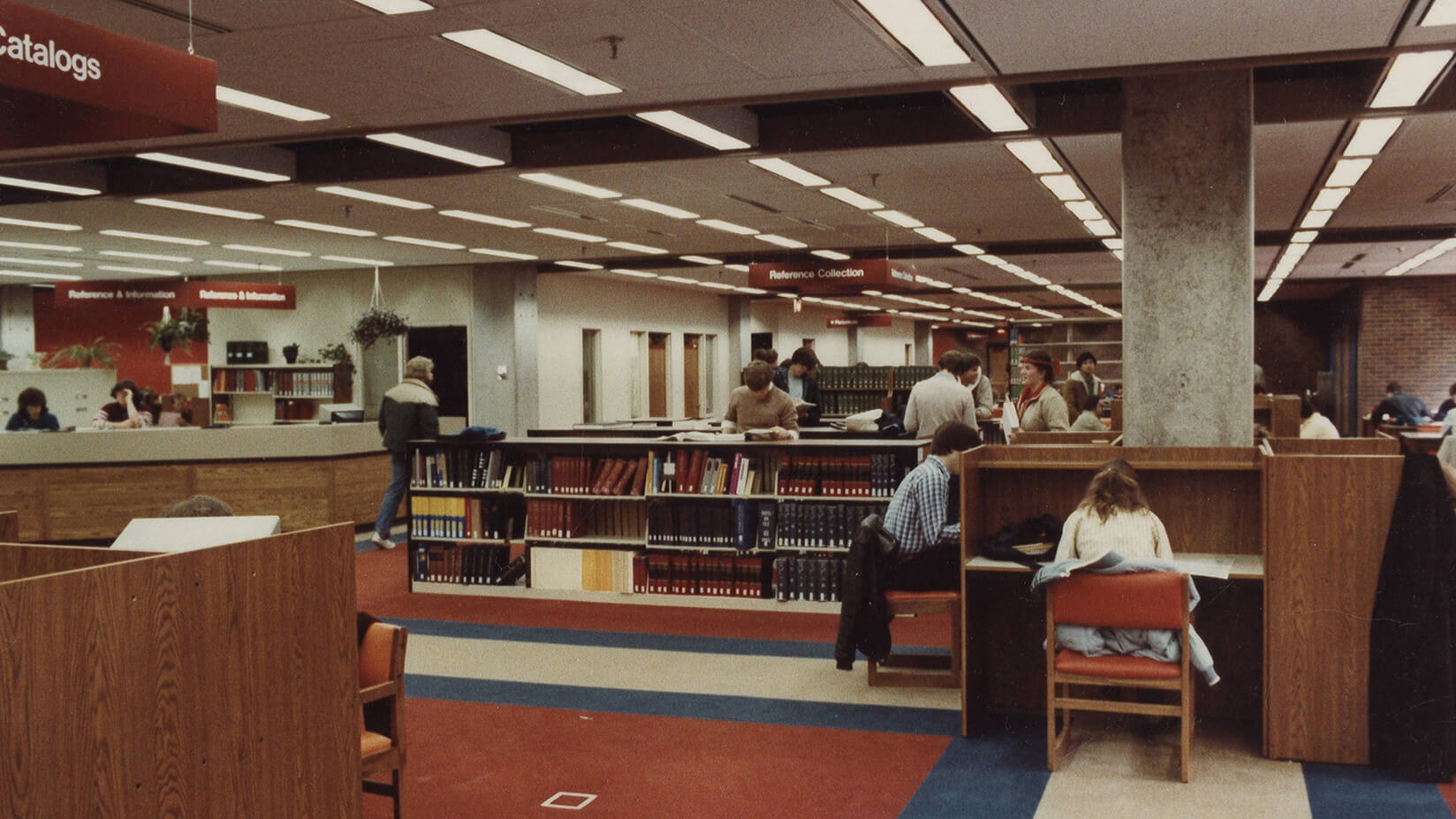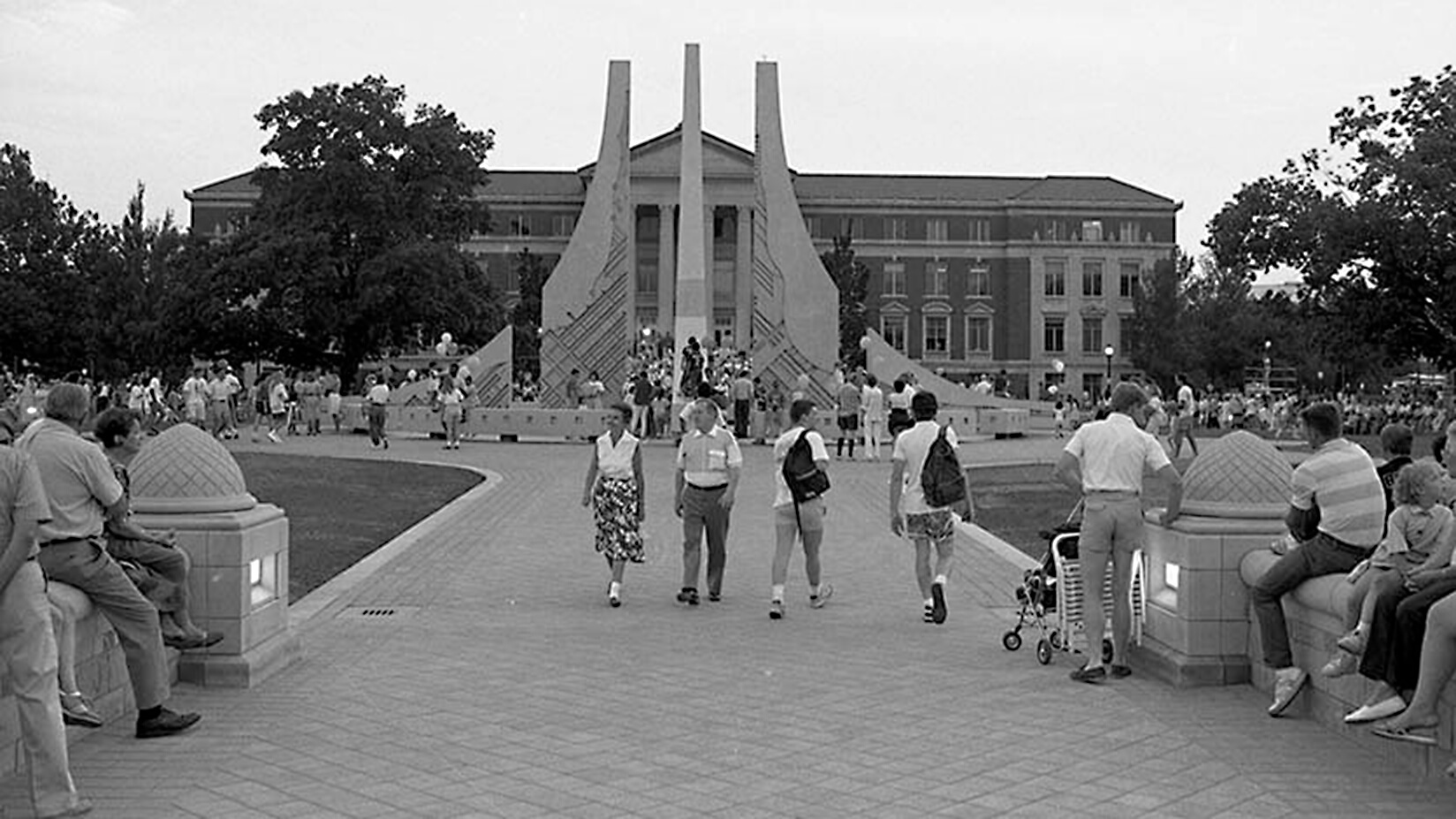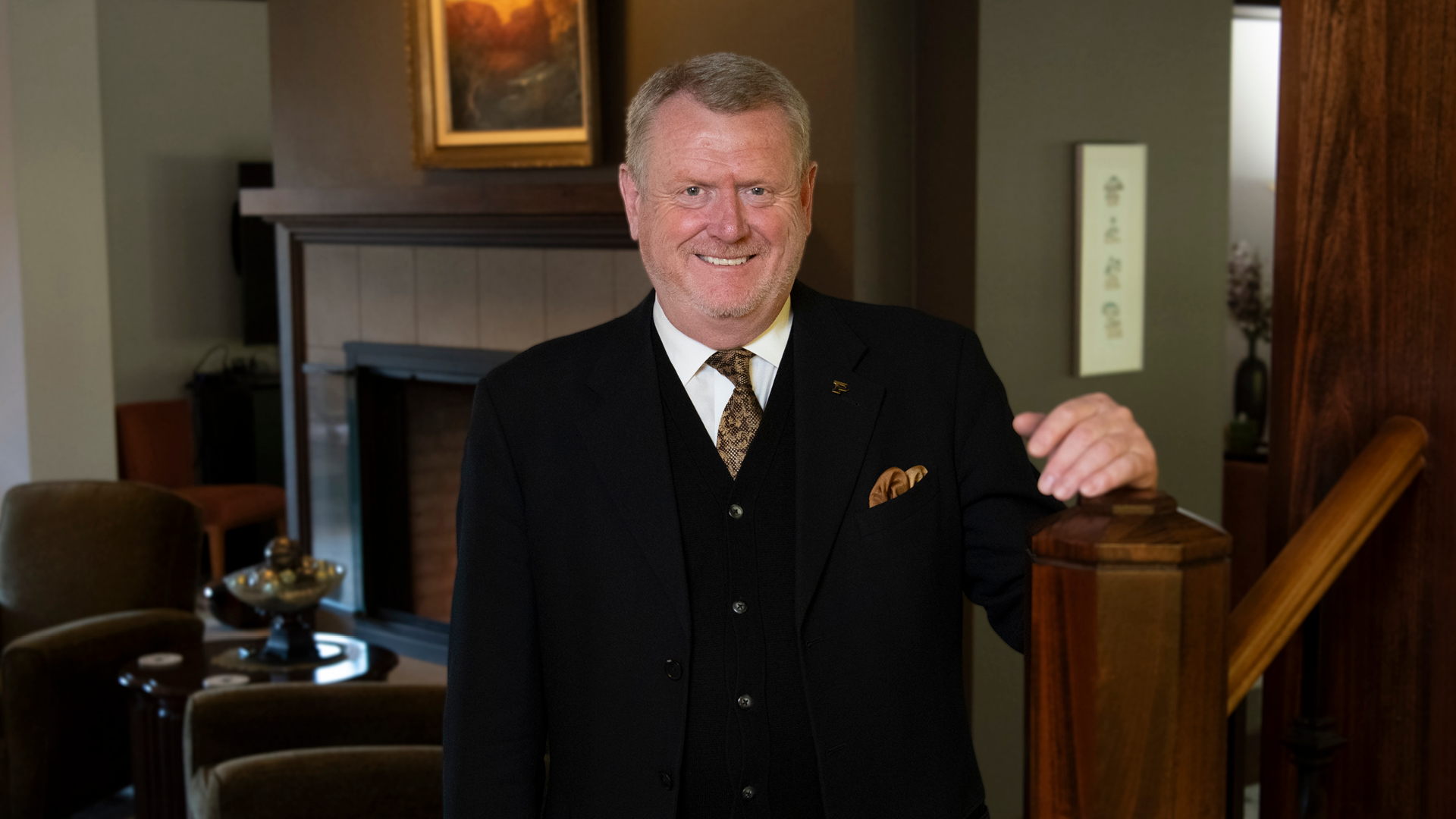Bringing a treasured Indy 500 tradition to the Purdue Grand Prix
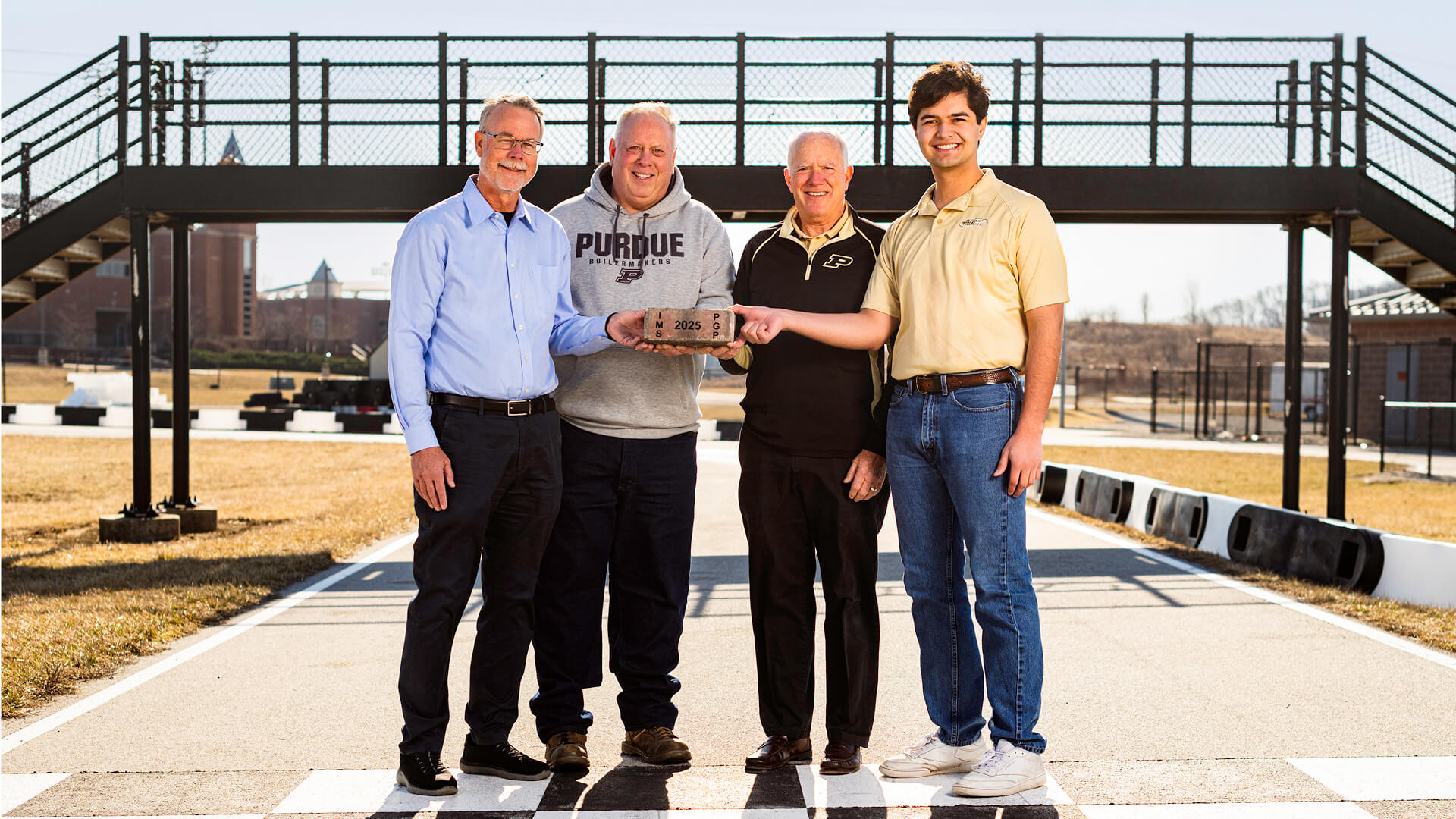
Purdue Grand Prix alums (from left) Al Wurster, Dave Fuhrman and Bill Shumaker join Purdue Grand Prix Foundation president Wil Rohrbach in holding up the final Indianapolis Motor Speedway brick to be installed at the start/finish line at the university racetrack. (Purdue University photo/Rebecca Robiños)
Mimicking Indy’s iconic Yard of Bricks, Purdue’s track now features a row of original IMS bricks at the start/finish line
Out of the hundreds of racetracks in the U.S., only two have racing surfaces that include original bricks from the Indianapolis Motor Speedway.
One, of course, is IMS, where the start/finish line features the legendary Yard of Bricks — the only portion of the brick-covered track installed in 1909 that remains part of the current racing surface. These bricks hold such a special place in racing lore that winning drivers traditionally bend down to kiss them after a successful run at The Brickyard.
The other is the Purdue Grand Prix track, thanks to a generous donation by Doug Boles, president of IMS and IndyCar, and three Boilermaker alumni who facilitated the brick donation and installation last fall.
“How cool is that, to be the only other track to have the original Culver brick in it?” asks Al Wurster (BS building construction technology ’85), a Grand Prix alum who first approached Boles with the idea three years ago. “The rich history of the Motor Speedway and what that brings to Purdue is pretty cool.”
Luckily, Boles was receptive to Wurster’s pitch, agreeing to donate some of the track’s few remaining original bricks to form the start/finish line at the Grand Prix track. On March 12, Boles attended a ceremony where representatives of the Purdue Grand Prix Foundation installed the final IMS brick in the row.
“For me, this is just a way to remind people that the Indy 500 doesn’t exist without Purdue University and the people that have graduated from Purdue University,” Boles says, citing the many historical connections between Purdue and one of the world’s most famous auto races. “This is just one more way to say we belong together, Purdue and the Indianapolis Motor Speedway.”
Although they are no longer visible except along the Yard of Bricks, the vast majority of the original 1909 bricks are still in place on the IMS track. They’re buried beneath several layers of newer racing surface from when the track was paved with asphalt in 1961 and resurfaced numerous times since then.
The bricks now at Purdue came from the small stash that IMS keeps in storage, adding a powerful new link between the Grand Prix track and its big brother in Indianapolis.
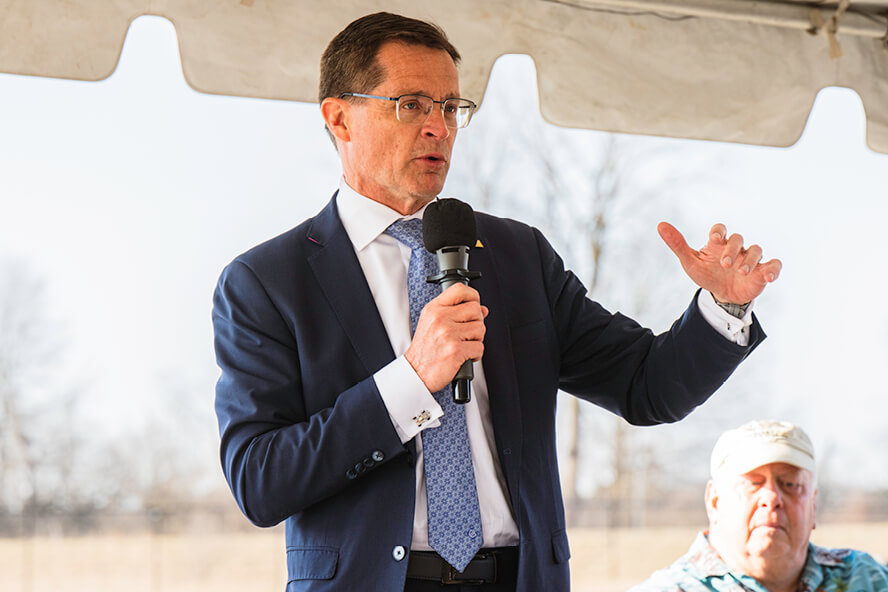
For me, this is just a way to remind people that the Indy 500 doesn’t exist without Purdue University and the people that have graduated from Purdue University.
Doug Boles
President, Indianapolis Motor Speedway and IndyCar
Old rivals reunite
Way back in the 1981 Purdue Grand Prix, race leader Bill Shumaker’s go-kart collided with Dave Fuhrman’s during a pass attempt, launching Shumaker’s kart end over end five times before it crashed into the fence that separated the spectators from the track. Fuhrman went on to win the race, while Shumaker was fortunate to be OK following one of the more violent Grand Prix wrecks that had occurred to that point.
“During the ’81 race, he was faster and I was luckier,” recalls Fuhrman (BS aviation technology ’81), now president of the Purdue Grand Prix Alumni Organization. “His kart tumbled into the crowd, and he was out of the race at that point. That was the defining moment of the race, when we came together, and he couldn’t continue, and I did.”
On an October afternoon more than four decades later, the former racing rivals found themselves side by side on the Purdue track once more. Only this time, they were creating a much happier form of race history, helping to install a single row of IMS bricks across the track at the start/finish line — leaving one central space for the final brick that was installed March 12.
Fuhrman first had the idea several years ago when the alumni organization raised funds to have the Grand Prix track resurfaced.
“I thought it would be a perfect opportunity with the new pavement down to try to request that the Speedway provide some pedigree bricks to put at the Purdue start/finish line to replicate the Speedway’s,” he says.
So he took the idea to Wurster, who served as chair of the 500 Festival in 2006 and still maintains connections with Boles, the iconic racetrack’s head honcho.
Fuhrman also approached Shumaker (BS building construction technology ’81) and his brother John (the 1983 Grand Prix winner), owners of Globe Asphalt Paving Co. in Indianapolis, about lending their expertise to the project.
“They were the people that originally paved the new Grand Prix track that we’re on now,” Fuhrman says. “Over the years, they’ve also been instrumental in repairing damage and things like that on the track. Bill was all excited and volunteered and donated the materials and the expertise and the equipment to actually lay the bricks into the track.”
Adds Shumaker, “They reached out and asked if I’d be willing to do it. All along I said I would and that ‘if you get the bricks, I’ll put them in.’”
Sure enough, they did. But it was a process that required patience.
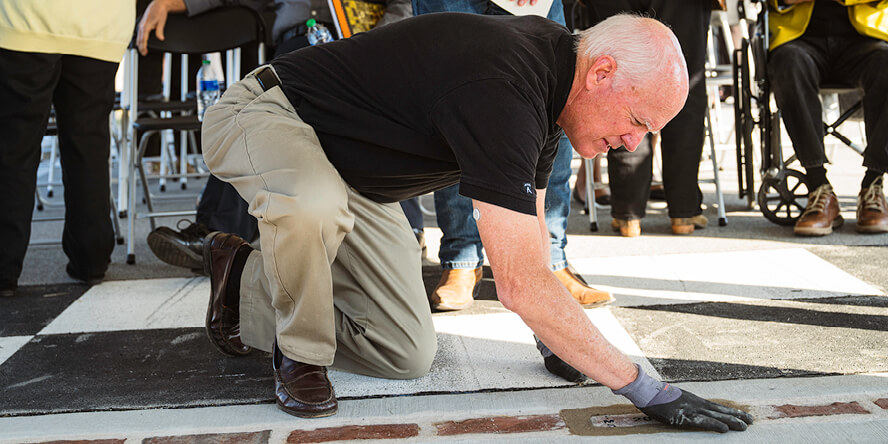
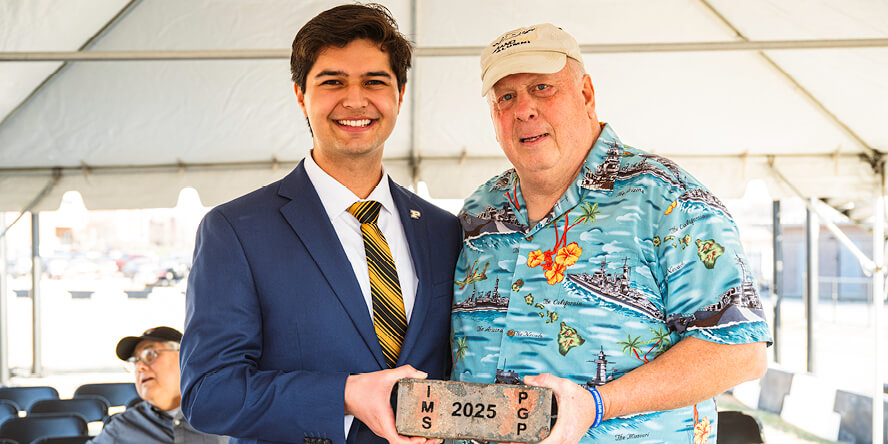
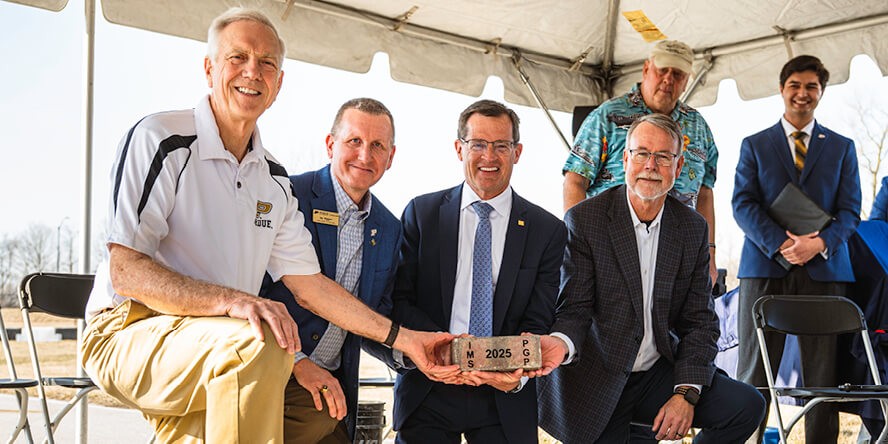
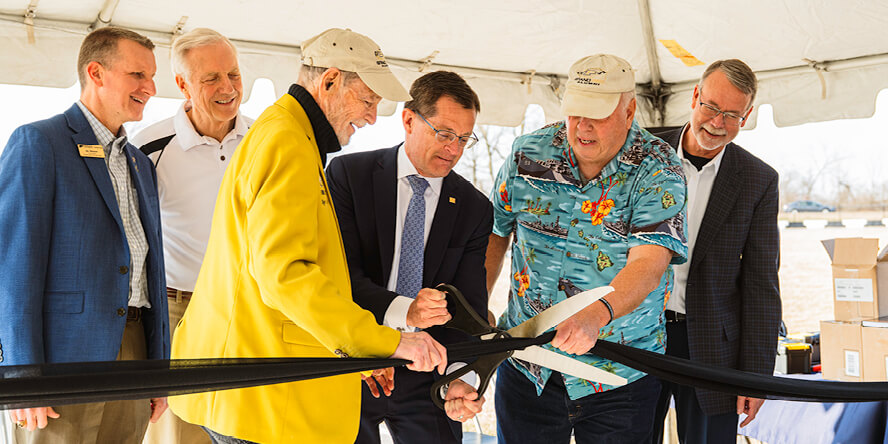
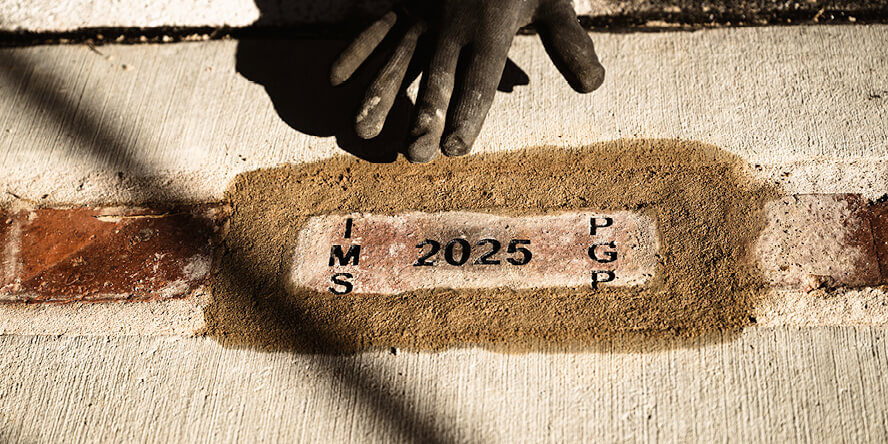
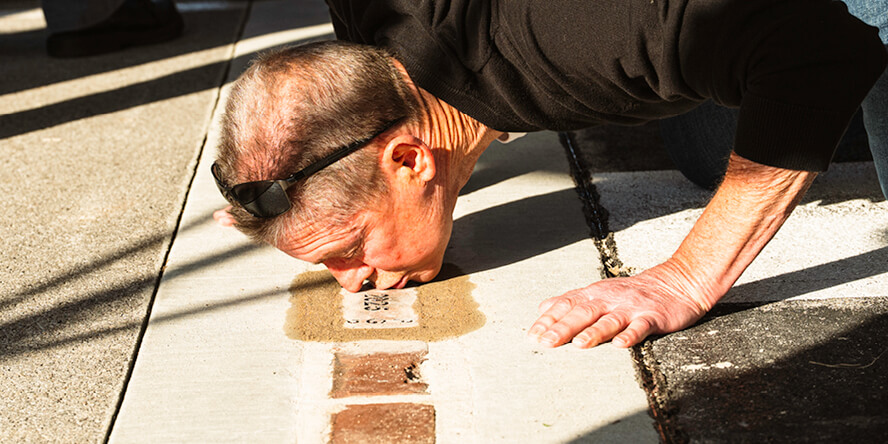
Retrieving the bricks
Believe it or not, the guy who oversees the world’s largest sports venue has a jam-packed calendar.
When Wurster first brought the brick donation idea to Boles a few years ago, the racetrack’s president agreed to help. However, like a rainy practice day in May, there were several starts and restarts before they were finally able to find a time where Boles could meet Wurster at the secret bunker where IMS keeps its stash of remaining original bricks.
Because of the historic (and monetary) value of the room’s contents, only a select few have been granted access.
“I’ve been told by Mr. Boles that that location is undisclosed,” Wurster says with a chuckle. “As well as how many bricks they have. I can’t disclose that either.”
In 1909, the track owner hired Wabash Clay Co. in Veedersburg, Indiana, to install 3.2 million bricks — enough to cover the entire 2.5-mile oval. Wabash’s bricks, known as “Culver blocks” after patent holder R.D. Culver, made up roughly 90% of the bricks installed at IMS. The remaining bricks came from subcontractors that Wabash needed to help fulfill the IMS order, which took 63 days to install.
All the bricks installed at Purdue are Culver pavers, some of which were unusually shaped or warped — likely because of the combination of their age and the inconsistency of the brickmaking process in the early 20th century. Wurster grabbed a couple extra just to make sure they had enough that would lie flat across the start/finish line.
“In today’s age, when placing bricks on any project, you expect all the bricks to be exactly the same size,” Shumaker says. “But these things definitely aren’t. I’m not sure when they were made — turn of the century or something back then — but we had to leave a little more room for them in the concrete brick bed. They may not sit perfectly flat across the top, but we tried to average everything out so when cars go across them, it’s still pretty smooth.”
Fuhrman selected a special brick out of the batch to sit at the center of the row. Because of the diamond-cut surface on the brick, he believes it once fulfilled an important purpose at IMS.
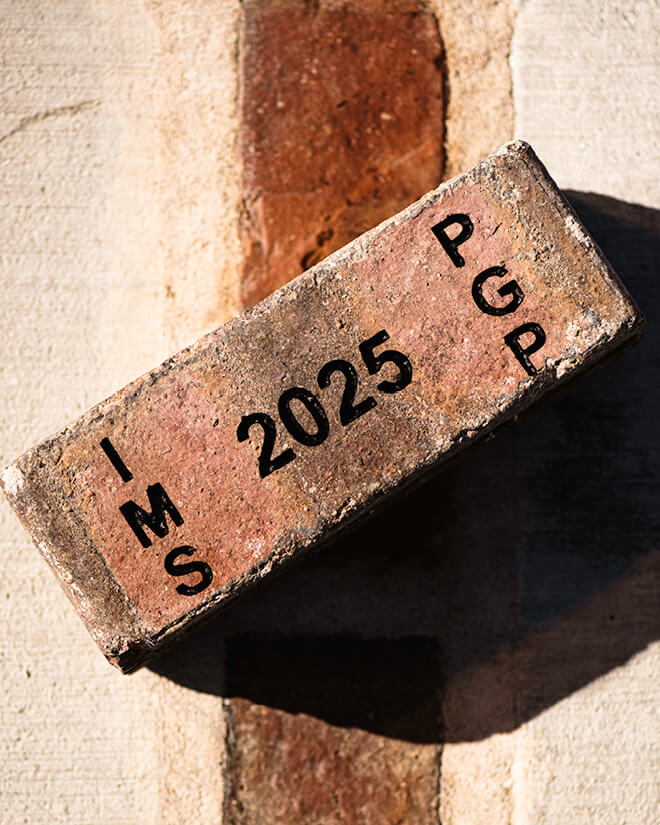
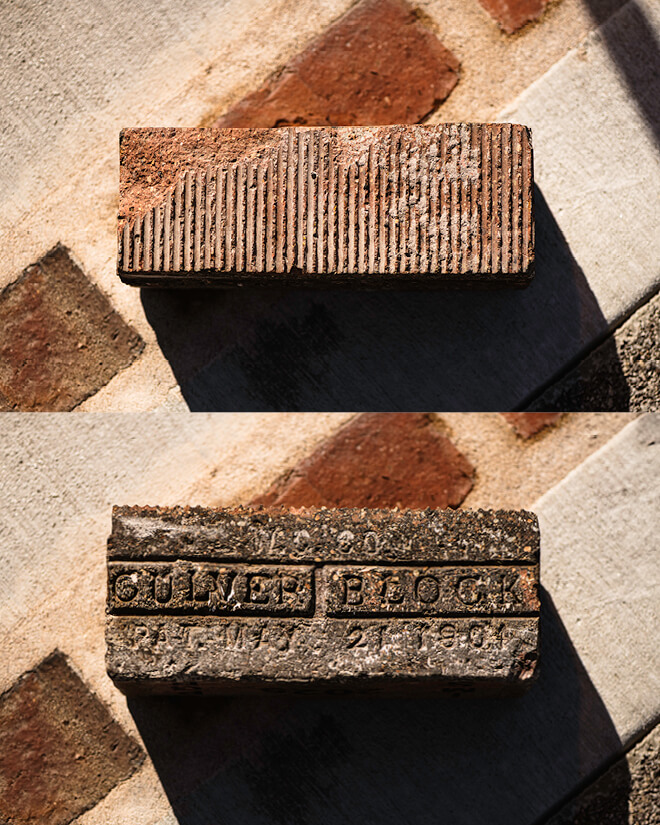
“As far as I know, the only place at the Speedway that the brick had diamond cut was at the start/finish line,” Fuhrman says, “so I think it has an actual pedigree to the start/finish line at the Speedway.”
Extending the Purdue-IMS partnership
Purdue’s relationship with IMS and its signature race, the Indianapolis 500, stretches back more than a century.
The Purdue “All-American” Marching Band has been the race’s official band since 1919, known for performing “Back Home Again in Indiana” moments before the race begins each year. The garage is well stocked with Purdue engineers who learned their trade at the only ABET-accredited motorsports engineering program in the country. And there are countless other Boilermakers who work behind the scenes to make “The Greatest Spectacle in Racing” a success.
The Grand Prix’s slogan even mimics that of the Indy 500.
“When you talk about synergies, (the Grand Prix is) allowed to use the term ‘The Greatest Spectacle in College Racing’ for our race,” Wurster says. “So that tells you how deep that goes, in my opinion, with the Motor Speedway.”
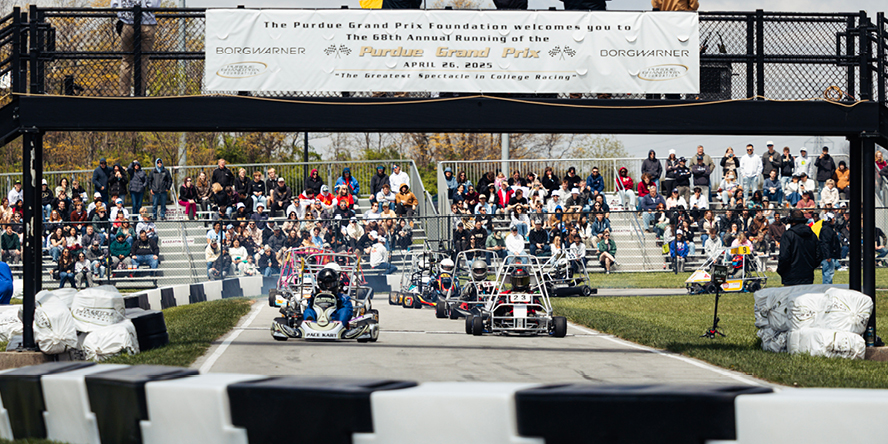
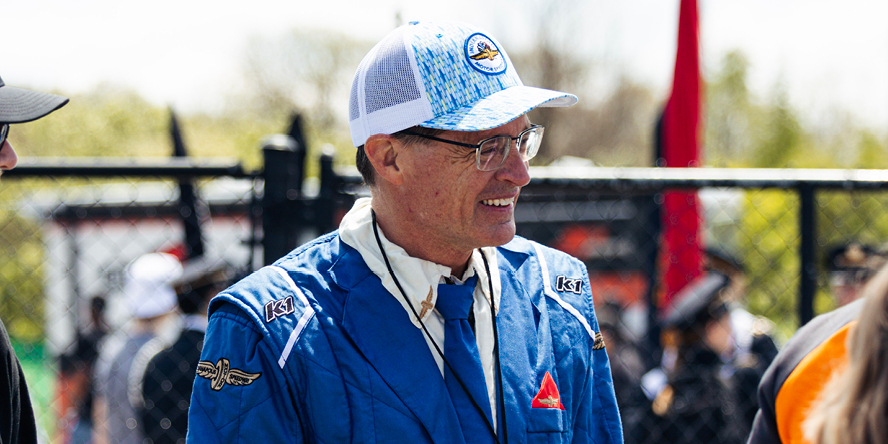
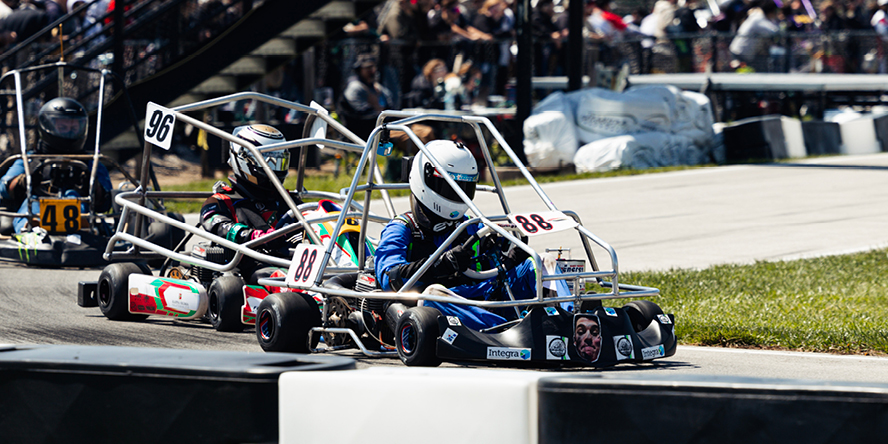

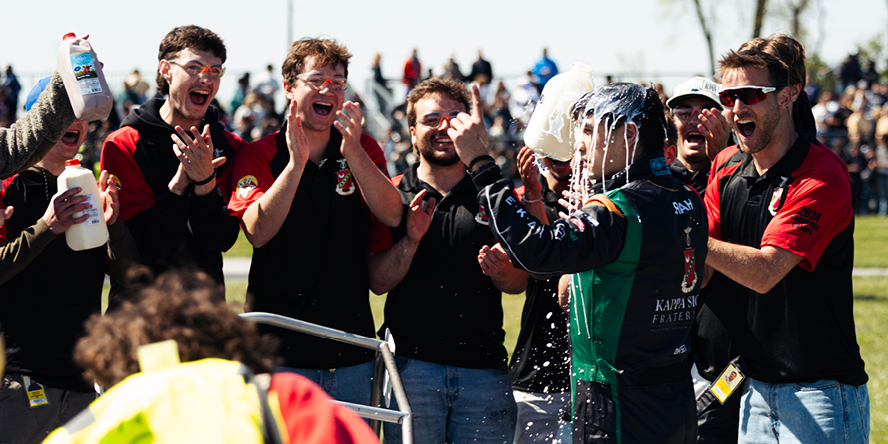
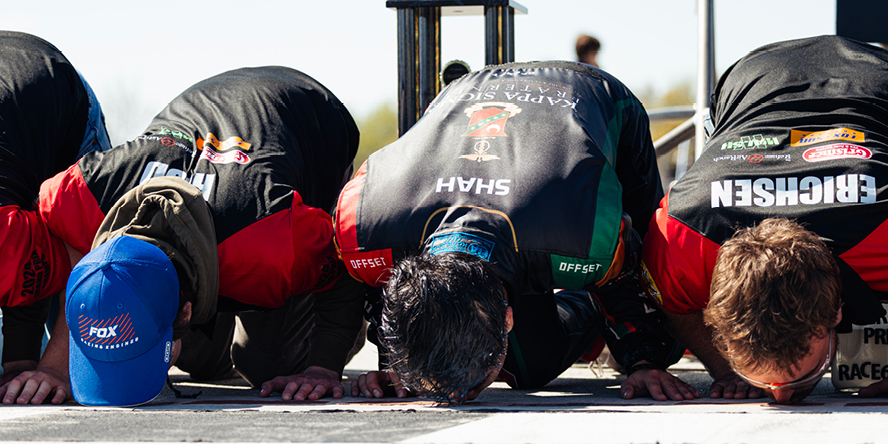
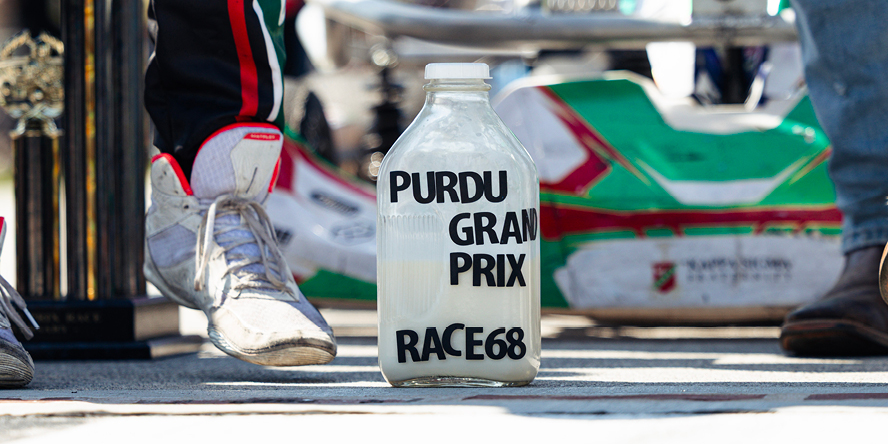
Purdue student Wil Rohrbach, president of Purdue Grand Prix Foundation, believes the timing of the Grand Prix race each April helps it complement the monthlong festivities that take place in May for the 500.
“It is pretty unique to Indiana to see people connected by racing and remembering where they’re from, their hometown roots,” says Rohrbach, a junior from Fort Wayne, Indiana, majoring in agricultural economics. “A lot of people go to the race at Indy every single year. And then especially if they grew up near Purdue, they would come here first in April and then go down to the Speedway in May. I view it like we’re an appetizer to the big race at the Speedway.”
Now, because of the behind-the-scenes work by three Grand Prix alums, the connection between the appetizer and main course is further blended — adding a new layer of tradition for future Boilermakers who will also view the Grand Prix as one of the highlights of their college experience.
“It’s an affirmation that the Purdue race does have significance in the state,” Fuhrman says. “Obviously, the size is significantly different, but the emotions and the competitiveness are very similar to the 500. Our state has a lot of iconic places, and the Speedway is at the top of that list. And if the Purdue Grand Prix can be part of that, even better.”
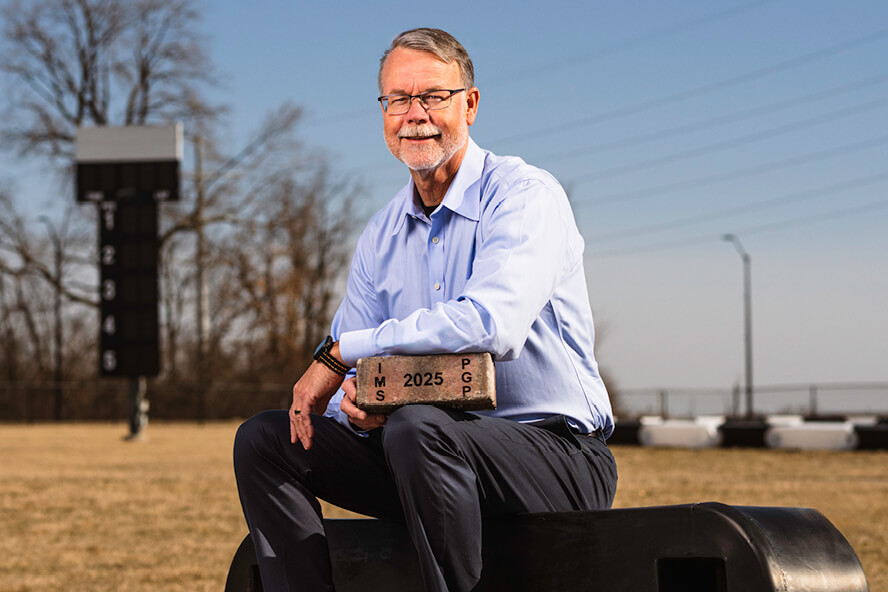
How cool is that, to be the only other track to have the original Culver brick in it? The rich history of the (Indianapolis) Motor Speedway and what that brings to Purdue is pretty cool.
Al Wurster (BS building construction technology ’85)
Purdue Grand Prix alum and chair of the 500 Festival in 2006
